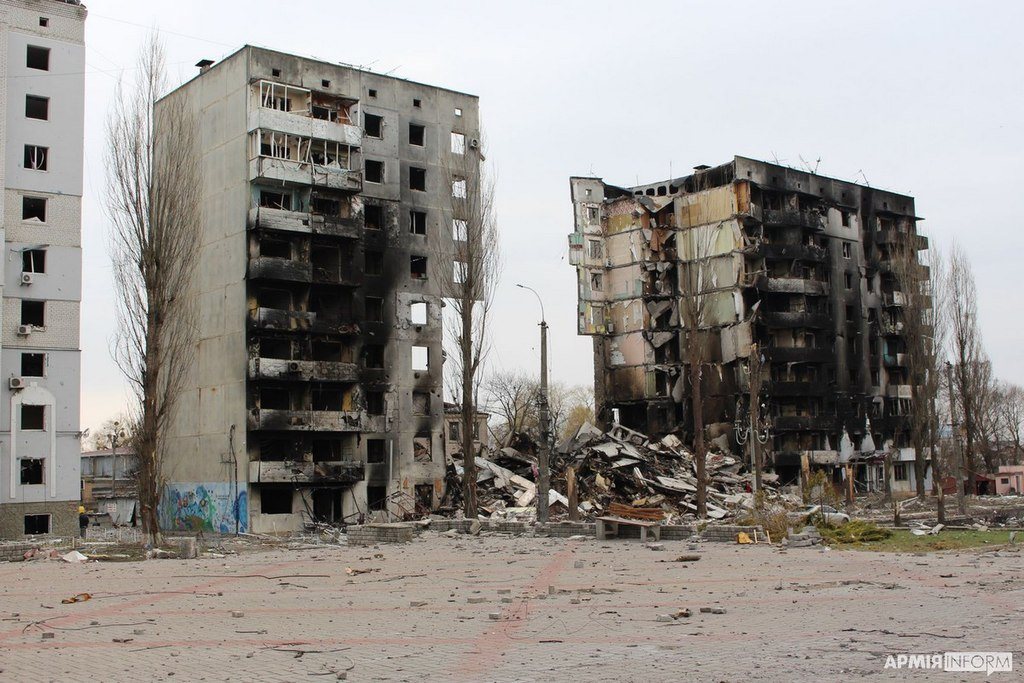How to Prosecute Ongoing Acts of Aggression Following the Initial Invasion
A singular act of illegal use of armed force can lead to criminal responsibility for aggression.

Published by The Lawfare Institute
in Cooperation With

Editor’s Note: This piece has been adapted from “Attributing Criminal Responsibility for the Crime of Aggression,” initially published in the Georgia Journal of International and Comparative Law.
In February 2022, Russia launched a war of aggression against Ukraine. Since then, the prosecution of aggression has been the focal point of many legal discussions. Yet among all of these debates, a significant obstacle persists: the absence of an international(ized) court with the jurisdiction to adjudicate on the crime of aggression in Ukraine. Although opinions vary on how to address this issue, there is mounting anticipation for the establishment of a specialized tribunal in the near future.
While much has been debated regarding the foundational principles and operation of the anticipated tribunal, there’s a glaring absence of in-depth discussion on the substantive aspects of the crime of aggression itself. This oversight is striking considering the persisting controversies in this domain, ranging from the breadth of prosecution to the attribution of criminal liability. Further, one outstanding question is how to address the prosecution of ongoing acts of aggression following the initial invasion. For instance, in the case of Ukraine, the initial invasion acts are clearly subject to criminal liability. But how should continuous acts of the illegal use of armed force be treated? Should they too face criminal liability for aggression?
The answer to the latter question is yes. As isolated incidents, these acts might not always entail individual criminal liability. However, when viewed in the larger context of state aggression, these acts underscore a sustained manifest violation of the UN Charter initiated by the inaugural act of aggression and therefore warrant prosecution.
An Act of Aggression That Warrants Criminal Responsibility
The principle of criminal responsibility for aggression solidifies the long-standing prohibition against the use of force in international law. This prohibition is enshrined in Article 2(4) of the UN Charter, which mandates that member states “refrain in their international relations from the threat or use of force against the territorial integrity or political independence of any state, or in any other manner inconsistent with the Purposes of the United Nations.” While any breach of this prohibition is consequential, only those characterized as a “manifest violation” of the UN Charter entail criminal liability, as stipulated by Art.8bis(1) of the Rome Statute.
In international law, the use of armed force is evaluated on a three-tiered scale determined by its intensity:
- Mere Use of Force: This is the baseline level, resulting in only state accountability for violations of primary international norms (jus ad bellum). According to the de minimis (minimal threshold) principle, even minor territorial incursions by armed units with hostile intent fall within this category.
- Armed Attack: Positioned at the intermediate level, if the use of force amounts to an armed attack, the victim state has the right to use force in self-defense. Defining what precisely constitutes an armed attack is, however, a contentious issue. The International Court of Justice in Nicaragua held that an operation may be classified as an armed attack because of its “scale and effect,” distinguishing it from minor border skirmishes that do not invoke the right to self-defense. Essentially any use of armed force would amount to an armed attack except for the very minor territorial incursions.
- Act of Aggression: This is the most severe breach against the principle of the prohibition of use of force in international law. The Rome Statute defines an act of aggression as “the use of armed force by a State against the sovereignty, territorial integrity or political independence of another State, or in any other manner inconsistent with the Charter of the United Nations.” Only this manifestation of the illegal use of force entails criminal liability for the interstate violence under the rules of international law. Article 8bis(2) of the Rome Statute lists examples of what qualifies as an act of aggression, including prominently military invasion.
However, not every act of aggression is criminal. Before the Rome Statute’s 2010 Review Conference in Kampala formalized the current definition of the crime of aggression, states debated the nature of aggression and whether it warranted personal criminal culpability. Leading into the Kampala Conference, the Special Working Group for the Crime of Aggression adopted the “Understandings,” with Points 6 and 7 elaborating on this further:
6. It is understood that aggression is the most serious and dangerous form of the illegal use of force; and that a determination whether an act of aggression has been committed requires consideration of all the circumstances of each particular case, including the gravity of the acts concerned and their consequences, in accordance with the Charter of the United Nations.
7. It is understood that in establishing whether an act of aggression constitutes a manifest violation of the Charter of the United Nations, the three components of character, gravity and scale must be sufficient to justify a “manifest” determination. No one component can be significant enough to satisfy the manifest standard by itself. (emphasis added)
The outcome was the incorporation of Article 8bis(1) into the Rome Statute, which stipulates that for an act of aggression to be deemed criminal, its “character, gravity, and scale” must manifestly violate the UN Charter. Consequently, not all acts of aggression entail criminal liability; only those deemed as “manifest aggression” do. This concept of manifest aggression—commonly termed the “state conduct element”—is a necessary condition and a reference point for individual criminal responsibility.
Legal Framework for Prosecution of Ongoing Acts of Aggression
By February 2022, Russia had evidently committed a manifest aggression, and its leaders should bear responsibility for these actions. But what about the subsequent instances of its illegal use of armed force? Former U.S. Ambassador at Large for War Crimes Issues David Scheffer said that with each passing day marked by Russia’s unauthorized use of force, Ukraine is experiencing an ongoing crime of aggression. Even if many of these acts (including “horrific” missile strikes) might not rise to the level of manifest aggression, should they be exempt from prosecution?
Not necessarily. A singular act of illegal use of armed force can lead to criminal responsibility for aggression if it either constitutes manifest aggression in and of itself or is a part of broader hostilities that, in their entirety, amount to the overarching state conduct element.
This proposition stems from a conceptual distinction between the material (actus reus) elements of the crime of aggression: conduct, consequences, and circumstances. According to the basic structure of international crimes, wrongfulness is attributed to individuals whose conduct causes criminal consequences within specific circumstances. Importantly, individuals are not responsible for creating the circumstances of the crime. In statutory rape, for example, the offender is held accountable for engaging (conduct) in a sexual act (consequence) with a minor, not for the victim’s age (circumstance). Thus, while an offender must have the direct causal connection with the criminal consequences, regarding the circumstances—which ultimately qualify the conduct as wrongful and classify the wrongdoing as a specific crime—they need only to be aware of their presence. That is, the offender has to have a mental relationship with the circumstances of the case. This is the foundation on which we build an argument on criminal responsibility.
In the lead-up to the 2010 Kampala Conference, there was ambiguity about whether the state conduct element pertained to the consequence or the circumstance element. To streamline the discussion, “an act of aggression” was treated as a circumstance, while deliberation on the consequence element was postponed. In my article “The Actus Reus of the Crime of Aggression,” I argue that the consequence element of the crime of aggression can only be the material act of the use of armed force—a perceivable result of the perpetrator’s conduct. This act is the basis for a normative assessment of the existence of manifest aggression that qualifies individual conduct as wrongful.
It follows that, to be held responsible for the crime of aggression, an offender need not be implicated in an entire act of manifest aggression. It suffices if they caused a singular instance of the use of armed force, which either in and of itself qualifies as manifest aggression or is part of a series of state actions that, in totality, constitute the state conduct element. The offender, of course, must be aware of their leadership position and that they are contributing to the overarching state aggression.
The analogy of murder being classified as a crime against humanity provides a clearer perspective. As outlined in Article 7 of the Rome Statute, an act (conduct) resulting in death (consequence) breaches the prohibitory norm. However, it is the context of a “widespread or systematic attack” that sets the stage, distinguishing this violation as a crime against humanity. The International Criminal Tribunal for the former Yugoslavia in Tadić held that “a single act by a perpetrator taken within the context of a widespread or systematic attack against a civilian population entails individual criminal responsibility and an individual perpetrator need not commit numerous offenses to be held liable [for the crimes against humanity] … isolated, random acts should not be included in the definition of crimes against humanity.” Thus, even a single act of murder can be classified as a crime against humanity if it forms a part of a series of actions that collectively amount to a widespread or systematic attack. Drawing an analogy to the crime of aggression, any act of the illegal use of armed force, even if it does not directly constitute manifest aggression on its own, can be seen as a continuation of the crime of aggression if integrated into a series of actions that, collectively, amount to the state conduct element.
***
The crime of aggression begins when a state deploys armed force in a manifest violation of the UN Charter. Every subsequent illegal act of armed force by the aggressive state after this initial breach extends the initial crime and might incur individual criminal responsibility. Of course, not every act of use of armed force will be subject to prosecution. Certain actions might be justified, while others might not surpass the infamous “gravity threshold.” It is therefore upon the future court to discern and make policy choices that align with the principles of justice and international legal order.



